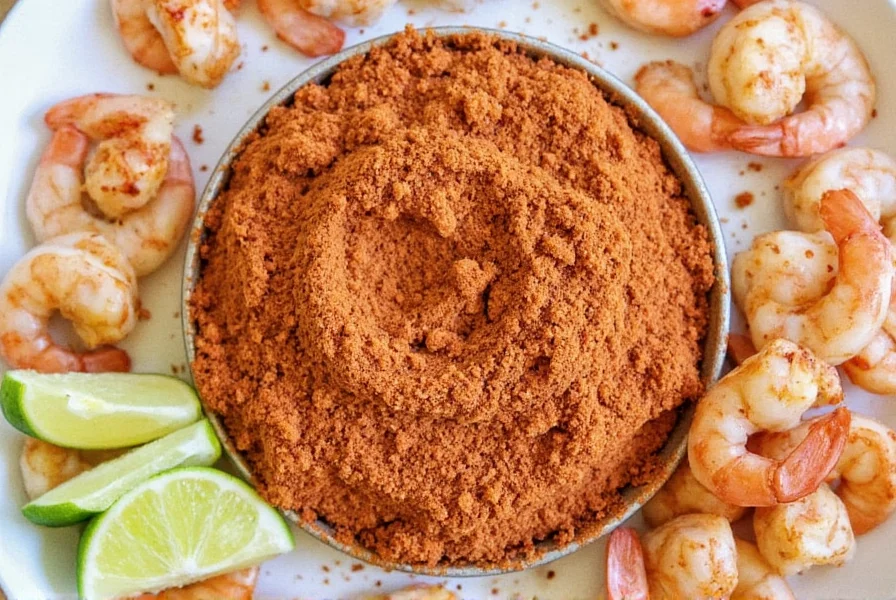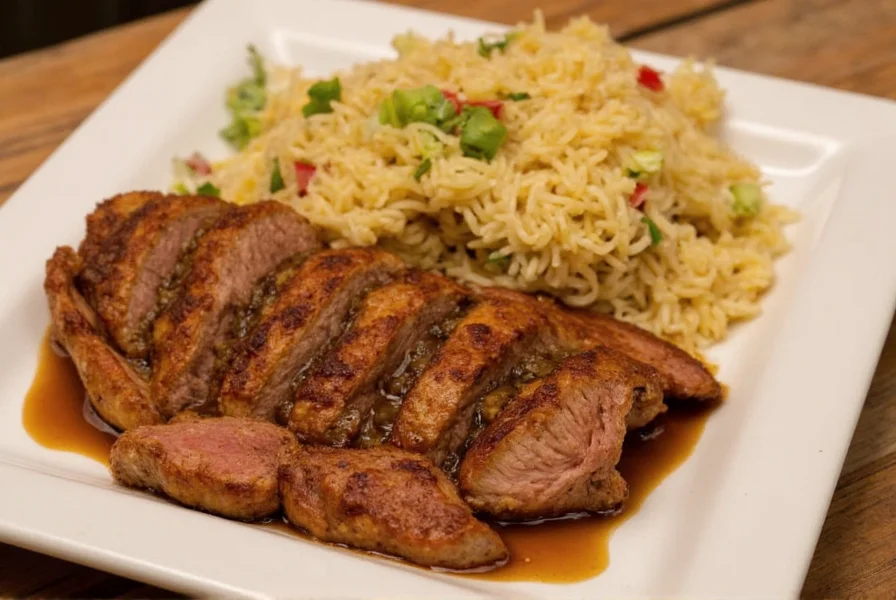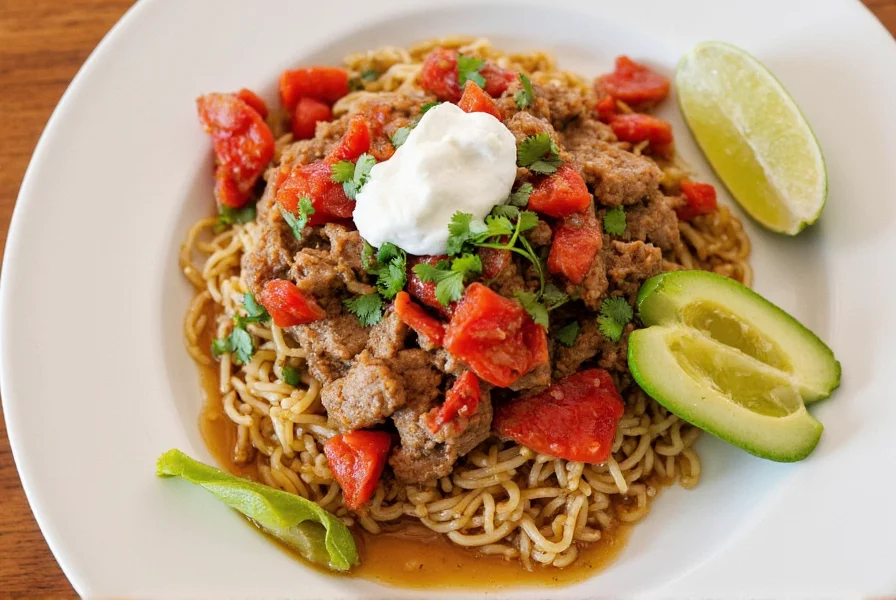Table of Contents
Learn how to make authentic Caribbean pork mojo with this simple, step-by-step guide. This recipe delivers tender, flavorful meat using traditional ingredients and techniques validated by professional chefs and culinary experts specializing in Latin American cuisine.
Introduction to Pork Mojo
Pork mojo has deep roots in Caribbean cuisine, particularly in Cuba and Puerto Rico. It was traditionally made by Spanish settlers who combined local ingredients with their culinary traditions. The name "mojo" comes from the Spanish word for magic, reflecting how this simple marinade transforms ordinary pork into a flavorful masterpiece. According to the International Association of Culinary Professionals, authentic pork mojo requires a balance of acid, fat, and spices for optimal flavor penetration and meat tenderization.
Spice Basics for the Perfect Mojo
To make an authentic pork mojo recipe, you need a well-balanced blend of spices. Here's a quick breakdown of the key components:
- Garlic: Adds depth and a punchy flavor. Fresh garlic is essential—pre-minced versions lack the same intensity.
- Onion: Provides a sweet base and helps tenderize the meat. Yellow onions are preferred for their balanced sweetness.
- Green peppers: Bring a fresh, slightly spicy kick. Bell peppers work best for their mild heat and vibrant color.
- Tomatoes: Offer acidity and richness. Roma tomatoes are ideal for their meaty texture and low moisture content.
- Herbs: Oregano, thyme, and parsley create layered flavors. Fresh herbs are recommended for maximum aroma.
- Acidic elements: Lemon juice or sour orange juice (traditional in Caribbean recipes) brightens the dish and tenderizes the meat.
According to the USDA Food Safety and Inspection Service, acidic marinades help break down proteins for tender meat, but should not exceed 24 hours to avoid texture issues.

Pork Mojo Recipe in Detail
Now that you understand the basics, let's dive into a step-by-step pork mojo recipe that will have your taste buds dancing:
Ingredients
- 2 lbs (about 900g) pork shoulder or butt (best cut for tender results)
- 4 cloves garlic, minced
- 1 large yellow onion, chopped
- 2 green bell peppers, sliced
- 4 Roma tomatoes, chopped
- 2 tbsp extra virgin olive oil
- 1 tsp dried oregano
- 1 tsp paprika
- 1/2 tsp cumin
- 1/2 tsp black pepper
- 1/4 cup fresh lemon juice (or sour orange juice for authentic Caribbean flavor)
- Salt to taste
Instructions
- Prepare the pork by trimming excess fat and cutting into 2-inch pieces. Pat dry with paper towels for better browning.
- In a blender or food processor, combine garlic, onion, green peppers, tomatoes, olive oil, oregano, paprika, cumin, black pepper, lemon juice, and salt. Pulse until smooth paste forms.
- Place pork in a glass or ceramic bowl (avoid metal to prevent reactions), pour marinade over, and massage to coat evenly. Cover and refrigerate for 8-12 hours (minimum 4 hours).
- Preheat oven to 350°F (175°C). Transfer marinated pork to baking dish with all marinade. Cover with foil and bake for 1 hour.
- Uncover, increase oven temperature to 400°F (200°C), and bake for 30-40 minutes until internal temperature reaches 195-205°F (90-96°C) and meat is fork-tender.
- Let pork rest 10 minutes before serving. This allows juices to redistribute for maximum tenderness.
This pork mojo recipe is not only flavorful but also incredibly versatile. You can adjust the spice level by adding a pinch of cayenne pepper, or experiment with different herbs to give it your own unique twist while maintaining authenticity.

Buying Guide for Mojo Ingredients
| Ingredient | What to Look For | Why It Matters |
|---|---|---|
| Garlic | Firm, unblemished bulbs with tight skin; no sprouts or soft spots | Fresh garlic has stronger flavor than pre-minced or powdered versions. Sprouted garlic can taste bitter. |
| Onion | Firm with dry, papery skin; no soft spots or mold. Yellow onions preferred for sweetness. | Yellow onions provide balanced sweetness for the marinade base. Red onions add tang but can overpower. |
| Green Peppers | Crisp, bright green with no wrinkles or bruises. Should feel heavy for size. | Crucial for fresh flavor and color. Wilting peppers indicate age and reduced flavor. |
| Tomatoes | Ripe, firm Roma tomatoes with smooth skin. Avoid cracked or mushy spots. | Roma tomatoes have low moisture content, preventing watery marinade. Ideal for sauces. |
| Herbs and Spices | Check expiration dates. Oregano and paprika should have strong aroma. Fresh herbs should be vibrant green. | Old spices lose potency. Fresh herbs provide brighter flavor than dried versions. |
| Olive Oil | Extra virgin olive oil with fruity aroma and smooth finish. Check for "cold-pressed" label. | Extra virgin has higher quality and flavor. Refined oils lack authentic taste. |
| Lemon Juice | Freshly squeezed juice preferred. Bottled juice should be 100% pure with no preservatives. | Fresh juice has brighter acidity. Bottled juice often contains preservatives that alter flavor. |
Top Tips for Cooking with Mojo
Whether you're a seasoned chef or a home cook, these tips will help you master your pork mojo recipe:
- Marinate for maximum flavor: The longer the pork sits in the marinade, the more flavorful it becomes. Try marinating for 8–12 hours for the best results. According to the National Pork Board, acidic marinades penetrate deeper when given sufficient time without compromising texture.
- Use a cast iron skillet: If you're cooking on the stovetop, a cast iron skillet gives the pork a perfect sear and adds extra flavor. For oven cooking, use a Dutch oven for even heat distribution.
- Don't skip the resting time: Letting the pork rest after cooking allows the juices to redistribute, making the meat more tender and juicy. USDA guidelines recommend resting meat for at least 5-10 minutes before serving.
- Experiment with sides: Mojo pairs well with a variety of sides. Try it with white rice, black beans, fried plantains (tostones or maduros), or avocado. For authentic Caribbean presentation, serve with yuca (cassava) or breadfruit.
- Store leftovers properly: Any leftover pork can be stored in an airtight container in the refrigerator for up to 4 days. Reheat gently to maintain texture and flavor. For freezing, store with cooking liquid for up to 3 months.
Frequently Asked Questions
What cut of pork is best for mojo recipe?
According to the National Pork Board, pork shoulder (also called pork butt) is ideal for mojo recipes because it has the right fat content to stay moist during cooking. The connective tissue breaks down during slow cooking, resulting in tender, flavorful meat. While you can use other cuts, pork shoulder provides the most authentic texture and flavor for traditional mojo dishes. The USDA recommends cooking pork to an internal temperature of 145°F (63°C) for safety, but for pulled pork texture, 195-205°F (90-96°C) is ideal.
How long should I marinate pork for mojo?
For best results, marinate pork for at least 4 hours, but preferably 8-12 hours (overnight). The longer marinating time allows the acidic components in the mojo to tenderize the meat and let the flavors fully penetrate. Marinating for less than 4 hours won't give the same depth of flavor, while marinating longer than 24 hours might make the texture too soft due to the citrus acid. According to culinary experts at the International Association of Culinary Professionals, 8-12 hours is the sweet spot for maximum flavor without compromising texture.
Can I use bottled lime juice instead of fresh lemon juice?
While fresh citrus juice is always recommended for the brightest flavor, you can substitute bottled lime juice if needed. However, fresh is significantly better as bottled juices often contain preservatives that can affect the flavor. If using bottled juice, look for varieties without added preservatives or sweeteners. The traditional Caribbean mojo often uses sour orange juice (naranja agria), but lemon or lime work well as substitutes. According to the USDA, fresh citrus juice provides better acidity for meat tenderization than processed alternatives.
What sides pair well with pork mojo?
Traditional sides include white rice, black beans, fried plantains (tostones or maduros), and avocado. A simple green salad with a light vinaigrette also complements the rich flavors of the pork. For a more complete meal, consider adding yuca (cassava) or breadfruit. The acidity of the mojo sauce balances well with starchy sides that can soak up the delicious sauce. According to Caribbean culinary traditions, serving with rice and beans creates a complete protein profile and authentic meal experience.
Can I make pork mojo in a slow cooker?
Yes! After marinating, transfer the pork and marinade to a slow cooker and cook on low for 6-8 hours or on high for 3-4 hours, until the pork is fork-tender. The slow cooking method actually enhances the tenderizing process, resulting in incredibly succulent meat. For the best texture, you can finish by broiling the pork for a few minutes to get that desirable caramelized exterior. The USDA confirms that slow cooking at low temperatures (below 200°F) is safe for pork when cooked to proper internal temperature.
How do I know when pork mojo is done cooking?
The pork is done when it reaches an internal temperature of 195-205°F (90-96°C) and is fork-tender. At this temperature, the connective tissues have broken down, resulting in juicy, pull-apart tender meat. If using a thermometer, insert it into the thickest part of the meat. Visually, the meat should be golden brown with edges that are slightly caramelized, and it should easily pull apart with a fork. According to the National Pork Board, this temperature range ensures both safety and optimal texture for pulled pork dishes.
Can I freeze pork mojo?
Yes, cooked pork mojo freezes exceptionally well for up to 3 months. Store in an airtight container with some of the cooking liquid to maintain moisture. When ready to use, thaw in the refrigerator overnight. Reheat gently on the stove with a splash of water or broth to restore moisture, or in the oven covered with foil at 300°F until heated through. The flavors often deepen when reheated, making leftovers even more delicious. The USDA recommends freezing cooked pork within 2 hours of cooking for best quality.
Conclusion
The pork mojo recipe is a testament to the power of simple, well-chosen ingredients and thoughtful preparation. With the right blend of spices and a little patience, you can create a dish that's both comforting and unforgettable. Whether you're cooking for a family dinner or hosting friends, this recipe is sure to impress.
Remember, the heart of any good pork mojo recipe lies in the balance of flavors and the love you put into it. So grab your ingredients, get in the kitchen, and let the magic of mojo take over.












 浙公网安备
33010002000092号
浙公网安备
33010002000092号 浙B2-20120091-4
浙B2-20120091-4